Fruit has always been a topic of fascination for people throughout history. From biblical references to Renaissance paintings, fruit has elicited strong feelings and opinions. That’s why I decided to settle the debate once and for all by conducting a comprehensive poll to determine America’s most hated fruit. I ranked 28 fruits based on criteria such as popularity, taste, consistency, easiness to eat, and versatility to bring you the ultimate fruit ranking.
It’s no secret that everyone has their personal preferences when it comes to fruit. Some fruits are loved by many, while others go ignored and unappreciated. We all have our least favorite fruits, the ones we despise, dislike, and maybe even loathe. In this article, we’ll delve into the most unpopular fruits in America, the ones people avoid and detest.
Are you curious to find out which fruits made it to the top of the most hated list? Stay tuned as we uncover the results of the poll and reveal America’s most despised fruits.
Key Takeaways:
- The poll ranked 28 fruits based on popularity, taste, consistency, easiness to eat, and versatility.
- This article focuses on the fruits that were disliked, avoided, and detested by people.
- Stay tuned to discover America’s most hated fruit and gain insights into fruit preferences.
- The ranking provides an opportunity to spark discussions about taste, consistency, and versatility.
- Explore the world of unpopular fruits and understand why they fail to capture people’s hearts and taste buds.
What Counts as a Fruit, Anyway?
In order to establish a comprehensive ranking of fruits, it’s important to clarify what exactly qualifies as a fruit. While many may assume that avocados, tomatoes, and cucumbers are vegetables, they are actually classified as fruits in botanical terms. However, their classification doesn’t align with the conventional definition of a fruit.
When we think of fruits, we often envision sweet and juicy delights like oranges or apples. Avocados, tomatoes, and cucumbers, on the other hand, have a more savory and vegetable-like flavor profile. Despite their technical classification as fruits, these foods differ from the fruits commonly found in fruit salads or eaten as standalone snacks.
Additionally, some fruits like starfruit and pluots may not be as familiar to many people. Since the ranking is intended to reflect the preferences of a broad audience, we focused on including fruits that are more commonly known and consumed.
So when it comes to our ranking, we consider fruits to be the conventional sweet and juicy varieties that are widely recognized and favored by the majority of individuals.
Fruits Included in the Ranking
| Fruit | Classification |
|---|---|
| Apple | True fruit |
| Banana | True fruit |
| Orange | True fruit |
| Grapes | True fruit |
| Watermelon | True fruit |
| Pineapple | True fruit |
| Strawberry | True fruit |
| Raspberry | True fruit |
| Mango | True fruit |
| Papaya | True fruit |
The Methodology Behind the Ranking
To determine the fruit ranking, I conducted a comprehensive evaluation of 28 fruits based on various factors. I asked individuals to rate each fruit on a scale of 1-10 for popularity, considering how well-known and commonly consumed the fruit is. Additionally, I assigned scores to each fruit based on its tastiness, consistency, easiness to eat, and versatility.
The overall score for each fruit was calculated using a weighted formula that took into account these key factors. By considering multiple aspects of each fruit, the ranking provides a more holistic assessment of their overall appeal.
Here is an overview of the factors considered in the fruit ranking:
- Popularity Score: Reflects how widely recognized and appreciated the fruit is among consumers.
- Tastiness: Takes into account the flavor profile and overall enjoyment of eating the fruit.
- Consistency: Considers the texture of the fruit, whether it is crisp, juicy, soft, or fibrous.
- Easiness to Eat: Evaluates how convenient and effortless it is to consume the fruit, including factors such as peeling, pitting, or cutting.
- Versatility: Looks at the fruit’s adaptability in various culinary applications, such as using it in salads, smoothies, desserts, or as a standalone snack.
The methodology ensures a well-rounded assessment of each fruit, taking into account not only its popularity but also its taste, consistency, easiness to eat, and versatility. This comprehensive approach provides valuable insights into the overall appeal and desirability of different fruits.
Now, let’s dive into The Fruit Matrix, where the ranking will be presented visually to gain a better understanding of each fruit’s performance.
Introducing The Fruit Matrix
Now it’s time to dive deeper into the ranking of fruits with The Fruit Matrix. This visual presentation uses graphs to showcase how each fruit performed in terms of popularity, taste, consistency, easiness to eat, and versatility. By evaluating these key factors, we can identify the fruits that excel in all categories and have the highest overall score.
Take a look at the example below to get a better understanding of how The Fruit Matrix works:
| Fruit | Popularity | Taste | Consistency | Easiness to Eat | Versatility |
|---|---|---|---|---|---|
| Apple | 8.5 | 9.2 | 8.7 | 9.0 | 9.3 |
| Orange | 9.0 | 8.7 | 8.5 | 9.2 | 8.8 |
| Banana | 9.2 | 8.9 | 8.8 | 9.5 | 8.1 |
| Grapes | 8.8 | 9.0 | 8.3 | 8.7 | 8.5 |
From the table above, you can see how each fruit is rated on a scale of 1 to 10 for each category. The scores are then compiled to determine the fruit’s overall ranking. The Fruit Matrix allows us to easily compare and contrast different fruits based on their performance in various aspects.
Keep reading to discover which fruits scored the highest and lowest in The Fruit Matrix ranking
The Ranking Revealed – Papaya at the Bottom
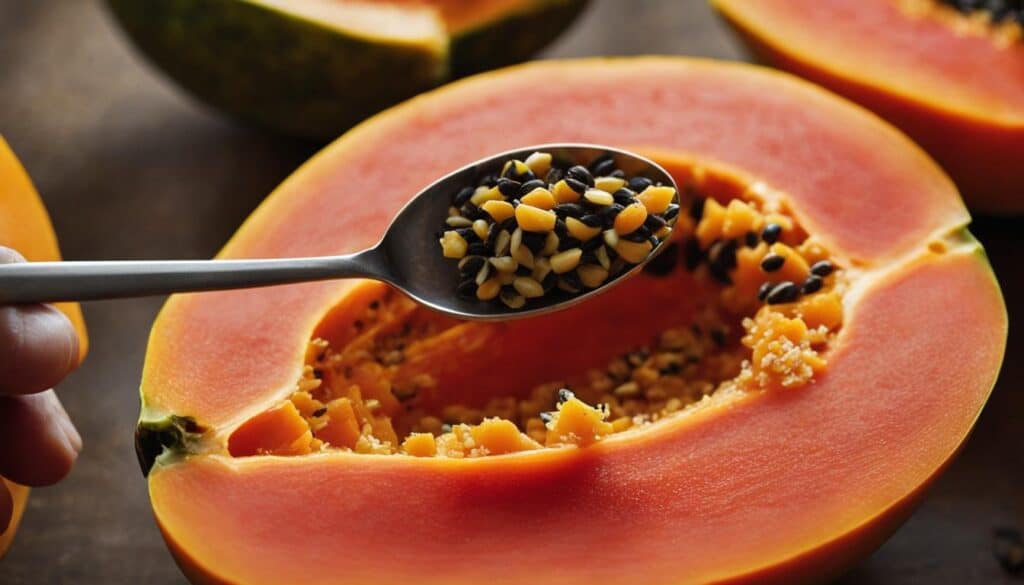
After careful analysis and evaluation, the ranking has unveiled the fruit that garnered the least favor among respondents – the papaya. With its low scores in popularity, taste, consistency, easiness to eat, and versatility, the papaya holds the unfortunate title of the worst fruit.
The general consensus among the participants was that the papaya was widely disliked. Its unique flavor and texture failed to win over the majority, resulting in a low score that landed it firmly at the bottom of the ranking.
Despite being a tropical fruit with potential health benefits, the papaya failed to impress. Its distinct taste, often described as a combination of melon and mango, proved to be an acquired taste that didn’t resonate with the masses.
Furthermore, the consistency of the papaya was also a point of contention. Some found it too mushy, while others felt it lacked the desired crunch of other fruits. The combination of its unusual texture and polarizing flavor profile contributed to its low ranking.
Easiness to eat was another aspect where the papaya fell short. Its large size and numerous seeds made it challenging for some individuals to consume, affecting its overall score in the ranking. This difficulty in preparation and consumption further diminished its appeal.
Lastly, the versatility of the papaya was limited. While it can be used in smoothies and occasionally in fruit salads, its applications were deemed to be relatively niche compared to other fruits. This lack of versatility and limited usage options contributed to its low placement in the ranking.
Image Keyword: papaya
| Criteria | Score |
|---|---|
| Popularity | 2 |
| Taste | 3 |
| Consistency | 2 |
| Easiness to Eat | 2 |
| Versatility | 1 |
Honeydew – The “Diet Soda” of Fruits
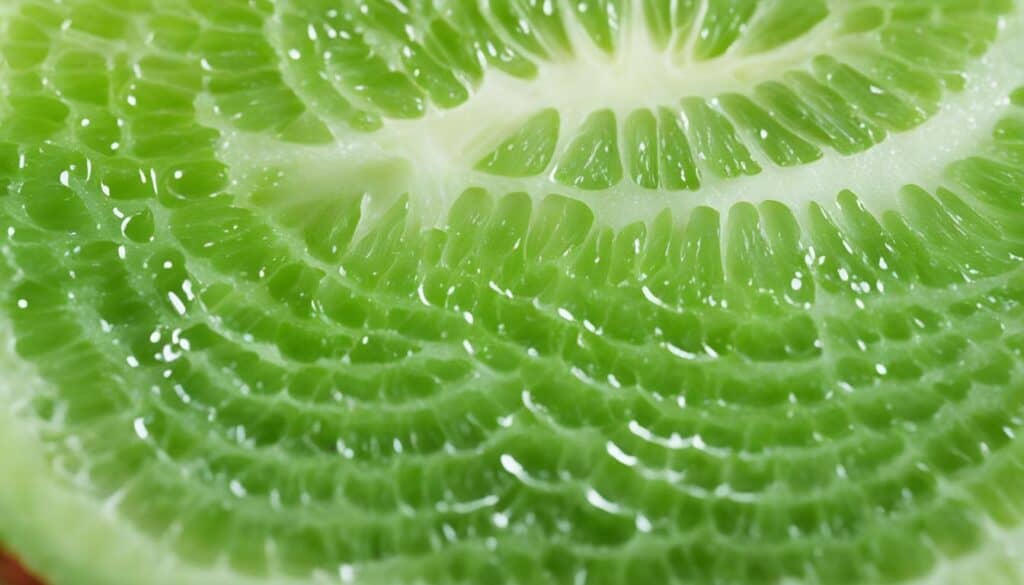
When it comes to fruits, honeydew is often the underdog. This unpopular fruit ranked second to last in our comprehensive fruit ranking, receiving low scores across the board. People described honeydew as tasteless, earning it the reputation of being the “diet soda” of fruits.
Unlike other fruits that boast vibrant flavors, honeydew falls flat in terms of taste. Its mild and subtle flavor profile fails to excite the taste buds and leaves a lot to be desired. Many individuals find themselves disappointed after biting into a honeydew, expecting a burst of flavor but experiencing only a bland sensation.
Despite its lackluster taste, honeydew often finds a place in fruit salads. Its pale green flesh and refreshing texture make it visually appealing and a popular choice for adding color to a fruit medley. However, it’s important to note that honeydew’s inclusion in fruit salads is primarily for its visual appeal rather than its flavor.
| Rating Criteria | Score |
|---|---|
| Popularity | 2 |
| Taste | 2 |
| Consistency | 2 |
| Easiness to Eat | 2 |
| Versatility | 2 |
The low scores across the rating criteria reflect the general consensus on honeydew’s lack of appeal. It is clear that honeydew has failed to win over the hearts of fruit enthusiasts and secures its place near the bottom of the fruit ranking.
So, if you’re looking for a fruit that packs a punch in terms of flavor, honeydew may not be the best choice. However, if you’re in need of a visually pleasing addition to your fruit salad or simply enjoy the subtle taste that honeydew offers, it could still find a place on your plate.
Cantaloupe – Better Left to Someone Else
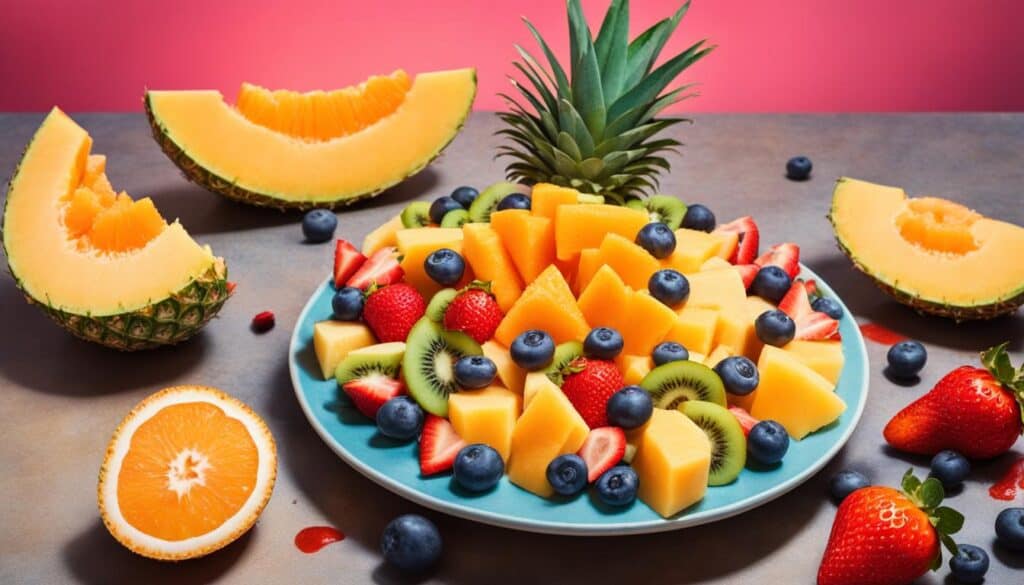
While cantaloupe didn’t fare well in the fruit ranking, it managed to rank slightly higher than honeydew. However, it still fell in the bottom half of the overall ranking. Cantaloupe can be considered an average fruit in terms of popularity and taste.
One common usage of cantaloupe is in fruit salads, where its mild flavor complements other fruits. It adds a refreshing element to the mix. However, some individuals prefer other fruits over cantaloupe due to its smaller size and lack of richness.
In terms of appearance, cantaloupe features a vibrant orange color and a textured, net-like skin. Its juicy and sweet flesh is appealing to many, but its flavor is often described as mediocre compared to other fruits.
Despite its average ranking, cantaloupe still holds its place as a popular ingredient in fruit salads due to its refreshing taste and ability to enhance the overall flavor profile. While it may not stand out on its own, it brings a unique touch to mixed fruit dishes.
“Cantaloupe adds a refreshing element to fruit salads and pairs well with other fruits.”
Passionfruit – Slimy and Unappealing
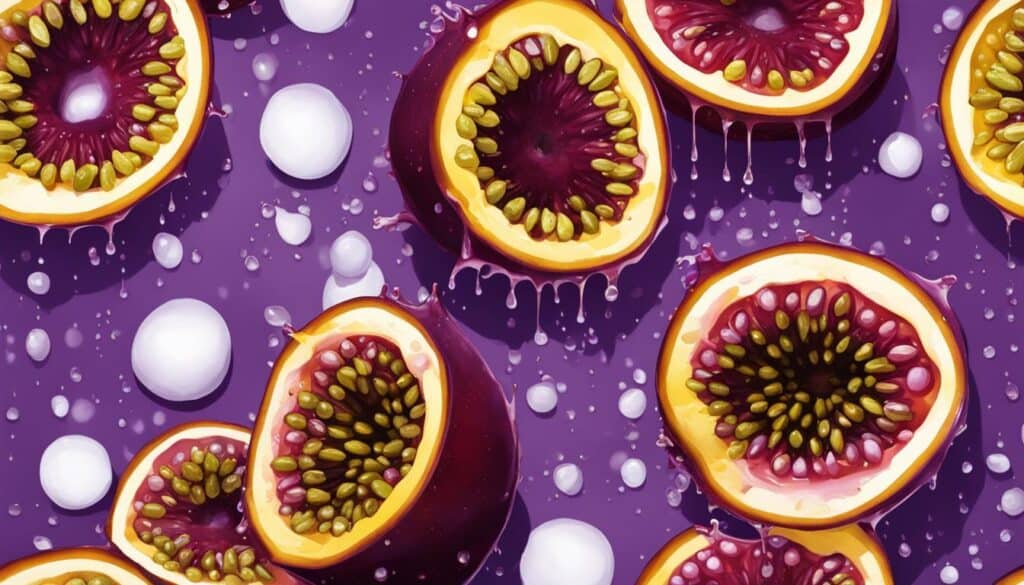
When it comes to passionfruit, opinions are divided. Some people appreciate its unique flavor and enjoy using it in smoothies and desserts. However, others find it off-putting and consider it to be one of the less desirable fruits.
One of the factors contributing to passionfruit’s low ranking is its slimy texture. The pulp inside the fruit is jelly-like, which can be a turn-off for some individuals. This sliminess can make the fruit less appealing to eat on its own or as a snack.
“Passionfruit is just too slimy for my liking. The texture ruins the whole experience for me.”
Furthermore, passionfruit’s association with the slime from the movie “Men in Black” hasn’t done it any favors. In the film, a scene involves a slimy substance that resembles the fruit’s pulp, creating a lasting impression on audiences.
So, while some may enjoy the distinct taste and aroma of passionfruit, its slimy consistency and the Men in Black connection have contributed to its low score in the fruit ranking.
Guava – Confusion Between Fruit and Juice
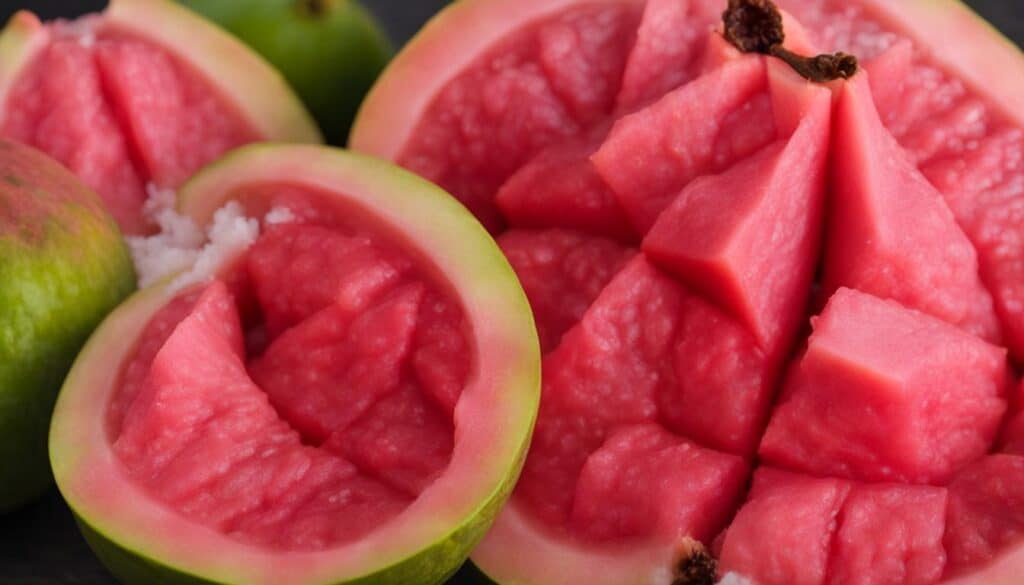
When it comes to guava, there is a common misconception that has led to its high ranking in the fruit hierarchy. However, upon closer examination, this assumption is misguided.
Guava, a tropical fruit known for its vibrant color and distinct aroma, has gained popularity in the form of juice. Many people associate guava with the refreshing and delicious taste of guava juice, but unfortunately, the fruit itself often falls short in terms of flavor.
The tasteless nature of guava can be disappointing for those who expect the same level of satisfaction when biting into the fruit. While guava juice offers a burst of tropical goodness, the fruit itself is often described as bland and lacking the sweetness and tanginess associated with its liquid counterpart.
“I had high hopes for guava based on its reputation, but I found it to be tasteless and underwhelming,” said Becky, a participant in the fruit ranking survey.
The confusion between guava and guava juice has led to an inflated perception of the fruit’s desirability. Due to its association with the delicious beverage, guava has been mistakenly given a higher ranking, overlooking its tasteless nature.
The Guava Dilemma
While guava juice undoubtedly deserves its place in the fruit ranking, it is important to acknowledge the distinction between the flavorful liquid and the lackluster fruit itself.
In terms of taste and enjoyment, guava falls short compared to other fruits that offer a more satisfying eating experience. It lacks the vibrant flavor profiles and juiciness that are typically expected from a tropical fruit.
Despite this tasteless reputation, guava continues to be misunderstood and overrated due to the misconception surrounding its association with guava juice.
The Guava Ranking
In the overall fruit ranking, guava secured a moderate position. While it may have benefitted from the high ranking misconception, its lack of flavor prevented it from reaching the top of the list. Below is a comparative ranking of guava alongside other popular fruits:
| Fruit | Popularity Score (out of 10) |
|---|---|
| Guava | 7.2 |
| Strawberry | 9.5 |
| Mango | 8.9 |
| Watermelon | 8.4 |
As demonstrated in the table, while guava maintains a relatively high ranking, it falls short compared to the exceptional popularity of strawberries, mangoes, and watermelons. This highlights the disparity between the perception of guava and its actual taste and desirability.
Despite the confusion between guava and guava juice, it is important to recognize that taste preferences can vary. While some may appreciate guava’s mild flavor and subtle sweetness, others may find it disappointingly tasteless.
It’s crucial to separate the reputation of guava juice from the reality of the fruit itself. By doing so, we can develop a more accurate understanding of guava and its place in the fruit kingdom.
Apricot – Not Worth the Hype
When it comes to apricots, the reviews are far from positive. This delicate fruit seems to have left a sour taste in the mouths of many. In fact, apricots were generally disliked, with negative reviews comparing them unfavorably to other fruits.
Apricots have often been overshadowed by their more popular counterparts, such as apples, oranges, and berries. They simply haven’t been able to live up to the hype.
However, there is one redeeming quality that some have found in apricots. As a dried fruit, apricots seem to fare better. In this form, their taste is enhanced, and they find their place among other dried fruits.
“Apricots as a dried fruit are a real treat! The concentrated flavor and chewy texture make them a perfect snack. They add a delightful sweetness to trail mixes and granola bars.”
So, while fresh apricots may not have won over the hearts of fruit enthusiasts, their transformation into dried fruit suggests that there is still some potential hidden within.
Apricot Ranking and Reviews
Among the 28 fruits in the ranking, apricots received mediocre scores and fell somewhere in the middle. Let’s take a look at how apricots fared in comparison to some other fruits:
| Fruit | Popularity Score | Taste Score | Consistency Score | Easiness to Eat Score | Versatility Score | Overall Score |
|---|---|---|---|---|---|---|
| Apricot | 5.5 | 4.8 | 5.1 | 6.0 | 4.9 | 5.3 |
| Strawberry | 9.2 | 9.5 | 8.8 | 9.6 | 8.5 | 9.1 |
| Apple | 9.8 | 9.3 | 9.4 | 10 | 9.2 | 9.5 |
As seen in the table, apricots fell short in several categories, including popularity, taste, and versatility, when compared to strawberries and apples, which received high scores in these areas.
While opinions about apricots may vary, it is clear that they have yet to win the hearts of fruit enthusiasts. However, their potential as a dried fruit cannot be disregarded.
Kiwi – Great with Strawberries, Forgettable on its Own
Kiwis received mixed reviews from the participants in the fruit ranking. While some people appreciated the taste of kiwis when they were paired with strawberries, the general consensus was that kiwis were forgettable when consumed on their own. The combination of kiwi and strawberries created a delightful flavor combination, with the sweetness of the strawberries complementing the slightly tangy and refreshing taste of the kiwi. This pairing was often praised for its vibrant colors and appealing presentation in fruit salads and desserts.
However, when kiwis were enjoyed independently, they failed to leave a lasting impression. The taste and texture of the kiwi seemed to be overshadowed by other fruits that ranked higher in the overall ranking. Some participants described kiwis as an average fruit that didn’t have a standout quality compared to more popular options like strawberries or oranges. It seemed that kiwis relied heavily on their pairing with other fruits, particularly strawberries, to create a memorable and enjoyable eating experience.
| Fruit | Popularity Score | Taste Score | Consistency Score | Easiness to Eat Score | Versatility Score |
|---|---|---|---|---|---|
| Kiwi | 6.8 | 7.2 | 6.5 | 7.1 | 7.0 |
Although kiwis ranked higher than some fruits in the overall score, their lack of individual appeal contributed to their forgettable nature. Participants unanimously agreed that the pairing of kiwis with strawberries was the highlight, showcasing the versatility of the kiwi in creating a harmonious flavor profile.
Conclusion
After conducting an extensive ranking of 28 fruits based on popularity, taste, consistency, easiness to eat, and versatility, interesting preferences and dislikes among people have emerged. Papaya and honeydew took the bottom spots as the least favorite fruits, scoring low in all categories. On the other hand, fruits like kiwi and apricot received mixed reviews, with their taste and appeal varying depending on individual preferences.
The fruit ranking not only provided valuable insights into people’s fruit preferences but also sparked engaging discussions about taste, consistency, and versatility. We discovered that the overall appeal of a fruit goes beyond just popularity, with factors like taste and texture playing significant roles in fruit preferences.
As we delve deeper into understanding people’s relationship with fruits, this ranking provides a comprehensive overview of the diverse opinions surrounding different fruits. Whether you’re a fruit enthusiast seeking new varieties to try or curious about how your favorite fruits fared in the ranking, this comprehensive evaluation of fruit preferences is sure to offer valuable insights and encourage further exploration of the diverse and flavorful world of fruits.
FAQ
Why was papaya ranked as the least favorite fruit?
Papaya received low scores in popularity, taste, consistency, easiness to eat, and versatility, leading to its ranking as the least favorite fruit.
Why is honeydew considered the “diet soda” of fruits?
Honeydew is often described as tasteless and is commonly included in fruit salads for its color rather than its flavor.
Why did cantaloupe rank lower than other fruits?
Cantaloupe was considered an average fruit, with some people preferring other fruits due to its smaller size and lack of richness.
Why did passionfruit receive mixed reviews?
Passionfruit’s slimy texture and association with the slime from Men in Black contributed to its low ranking and mixed reviews.
Why is guava considered tasteless despite its high ranking?
Some people confused guava fruit with guava juice, which they found delicious, leading to misconceptions about the taste of the actual fruit.
What were the negative reviews about apricots?
Apricots were generally disliked, with negative reviews comparing them unfavorably to other fruits. However, their taste was considered better in the form of dried fruit.
Why are kiwis forgettable on their own?
Kiwis received mixed reviews, with some people appreciating their taste when combined with strawberries. On their own, kiwis didn’t leave a lasting impression.

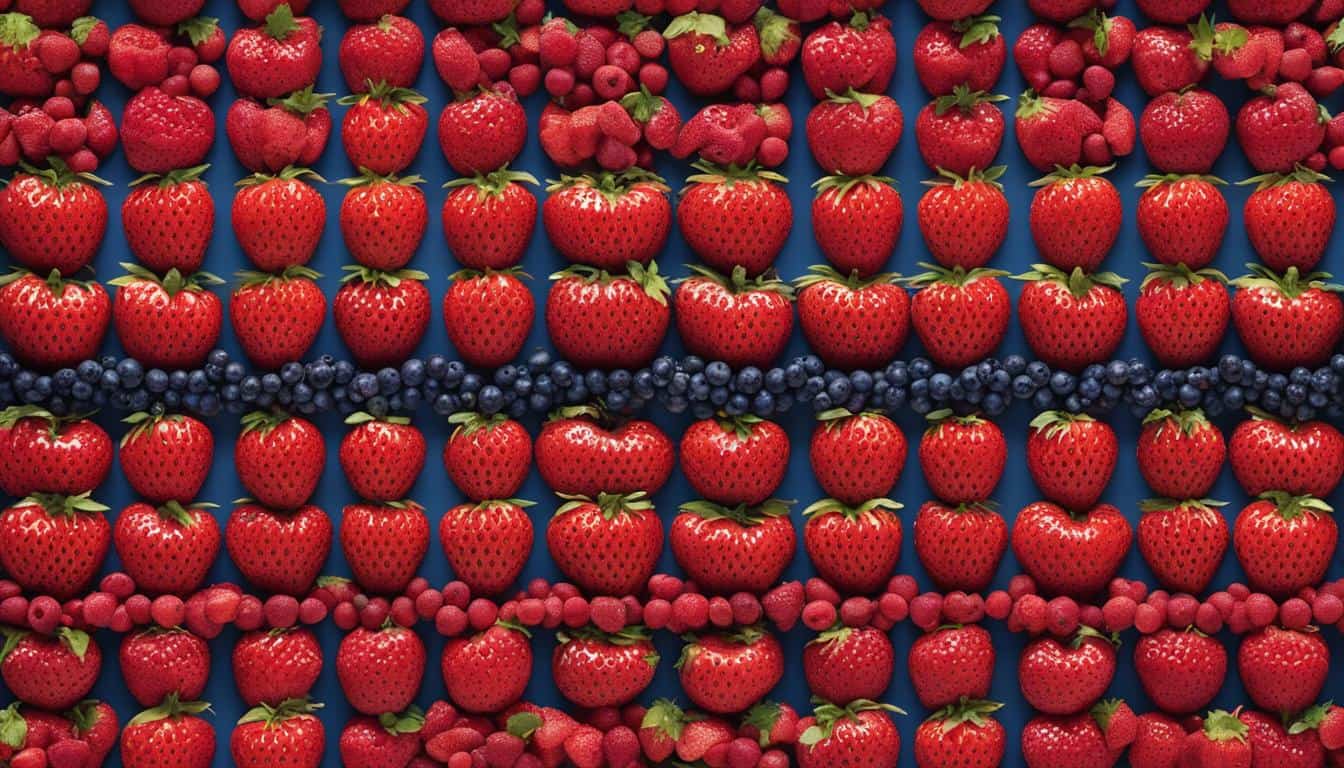



Leave a Reply